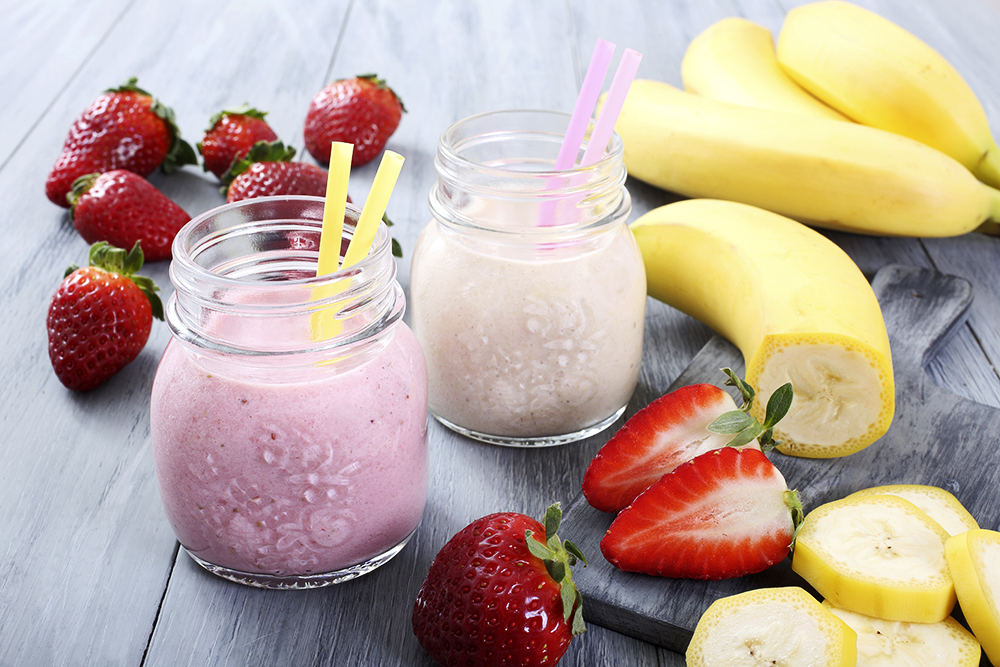
The FODMAP Diet
Some of life’s most embarrassing problems are a lot more common than we think. Approximately one in seven adults suffer from gastrointestinal problems such as gas and bloating, irritable bowel syndrome (IBS), and functional diarrhea. These symptoms can be painful and disruptive to normal activities. There has been research suggesting that a low FODMAP diet might be beneficial for individuals experiencing these symptoms.
FODMAP is an acronym for Fermentable Oligosaccharides, Disaccharides, Monosaccharides, and Polyols. These are natural sugars found in dairy, fruits, vegetables, and grains. Foods that contain FODMAP are not easily absorbed and individuals with sensitive GI tracts might experience increased symptoms of intolerance. The FODMAP sugars are small molecules that are poorly absorbed in the small intestine, causing them to pass rapidly into the large intestine where they are fermented by bacteria. This fermentation causes gas, bloating, diarrhea, and constipation.
A low FODMAP diet will limit fructose, lactose, fructans, galactans, and polyols. Here is quick outline of the foods to avoid on the low FODMAP diet:
FRUCTOSE – Monosaccharide sugars are found in fruit, honey, and vegetables. The most common sources of fructose are fruit, juice, high fructose corn syrup, honey, and agave. Very sweet fruits like pears, apples, peaches, and watermelon are highest in fructose and should be avoided, as should sweeteners like honey, agave, and high fructose corn syrup. When ingested by itself, fructose is poorly absorbed from the gastrointestinal tract and creates bloating, gas, and diarrhea.
LACTOSE – Disaccharide sugar present in milk and milk products. Lactose is most commonly found in yogurt, milk, soft cheeses, sour cream, and ice cream. Symptoms occur when the small intestine does not produce enough of the enzyme lactase. Lactase breaks down lactose into glucose and galactose, two forms of sugar that are easier to absorb. Lactose-free dairy foods are acceptable to eat on the low FODMAP diet.
FRUCTANS – Oligosaccharide sugar found in a variety of vegetables, fruits, and cereals. Fructan-containing foods include wheat, garlic, and onion. Additional sources of fructans are inulin and Fructo-oligosaccharides (FOS), both of which are frequently added to foods for their prebiotic effects. Fructans alone can induce abdominal symptoms and can also exaggerate those associated with fructose malabsorption or lactose intolerance. Hence, fructans are often limited in any dietary modification for patients with fructose malabsorption and IBS.
GALACTANS – The carbohydrate form found in beans, lentils, soy, and cruciferous vegetables, such as Brussels sprouts and cabbage. These foods are also high in fiber, which can cause bloating and gas.
POLYOLS – Polyols are relatively underexplored as FODMAPS but are found widely in foods. Polyols are naturally present in foods like apricots, mushrooms, and cauliflower. They are also commonly used as artificial sweeteners in sugar-free chewing gum, candy, and mints. Polyols can be identified by additive numbers on food packaging: Sorbitol (420), Mannitol (421), Maltitol (965), Xylitol (967), and Isomalt (953), along with this mandatory declaration: “excessive consumption may have a laxative effect.”
So what should you eat? Here are some snack and meal ideas that are low FODMAP:
- Egg scramble with peppers and spinach
- Fruit smoothie with lactose-free yogurt, banana, strawberries
- Quesadilla with corn tortilla and cheddar cheese
- Rice cakes with peanut butter
- Celery sticks with peanut butter
It is important to keep in mind that it is still vital to include food from all five food groups and continue to have a variety of foods. This is not a lifelong diet and foods should be reintroduced after six weeks. Individuals should be monitored by a dietitian when following a low FODMAP diet in order to prevent nutrient deficiencies.
Go here additional details on foods high and low in FODMAP.
 Julia Marnadi, RD, CD is a registered dietitian at UWMC working closely with the bone marrow transplant population. In her spare time she enjoys cooking, trying new recipes, and spending time with her boys, age 13 and 3. She also enjoys running with her friends.
Julia Marnadi, RD, CD is a registered dietitian at UWMC working closely with the bone marrow transplant population. In her spare time she enjoys cooking, trying new recipes, and spending time with her boys, age 13 and 3. She also enjoys running with her friends.
This post was originally published in the RD Blog. You can visit the RD Blog and see its archives if you have a UW Medicine ID.
References:
American Society for Clinical Nutrition. How bad is fructose? George A Bray. Ocotober 2007.
Digestive Health Foundation. Information About Low FODMAP Diet. June 2013.
Journal of Gastroenterology and Hepatology. Evidence-based Dietary Management of Functional Gastrointestinal Symptoms: The FODMAP Approach. Peter R Gibson, Susan J Shepherd. October 2009.
Practical Gastroenterology. A FODMAP Diet Update: Craze or Credible? December 2012.